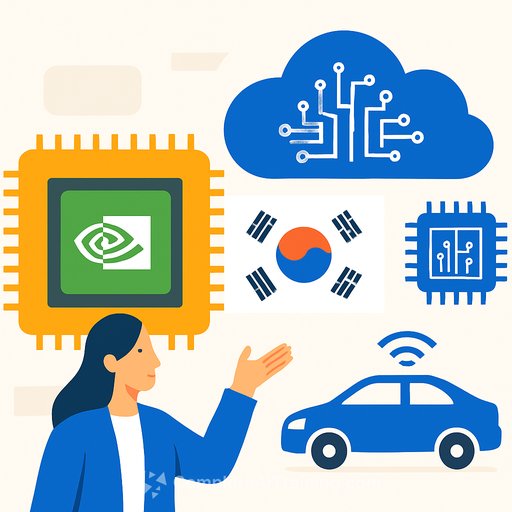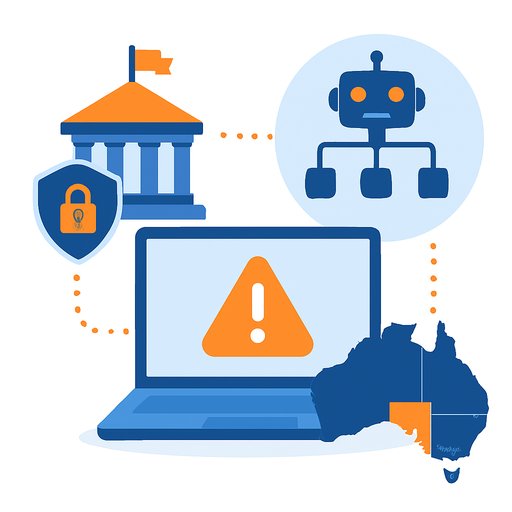Nvidia's GPU Pact With South Korea: What Government Leaders Need To Know
South Korea has secured a major AI hardware commitment from Nvidia: roughly 260,000 GPUs to strengthen national computing capacity and industry adoption. The plan includes allocations for a government-run AI cloud center and partnerships with Samsung, SK Hynix, and Hyundai Motor.
The announcement came alongside Asia-Pacific Economic Cooperation meetings in Gyeongju, where the country is positioning itself as an AI hub. For public officials, this is about capacity, sovereignty, and speed-getting the infrastructure in place to support next-generation public services and domestic industry.
The numbers at a glance
- ~260,000 Nvidia GPUs committed to South Korean projects.
- ~50,000 GPUs earmarked for a government-led national AI cloud center.
- ~50,000 GPUs each for Samsung Electronics and SK Hynix to apply AI to manufacturing and accelerate advanced semiconductor development.
- ~50,000 Blackwell GPUs to power Hyundai collaborations in autonomous driving, smart factories, and robotics.
Geopolitics: export rules still in play
Nvidia signaled interest in selling advanced chips to China in the future, but current U.S. restrictions remain the deciding factor-particularly for the newest Blackwell line. Recent discussions between U.S. and Chinese leaders hinted at easing trade tensions, though policy specifics on advanced chip exports are still controlled by Washington.
Bottom line for public planning: expect policy-driven volatility. Procurement timelines, cross-border supply, and compliance will remain moving targets. For context on U.S. export controls, see the Bureau of Industry and Security's guidance here.
Why this matters for government
- National AI capacity: A centralized AI cloud gives agencies shared compute for health, transport, defense R&D, and public data services-without each department chasing separate stacks.
- Industry policy goals: Tying GPUs to semiconductors and mobility builds leverage in key export sectors while keeping critical capabilities at home.
- Security and compliance: Centralizing workloads can enforce standards on data protection, model risk, and audit trails.
- Energy and siting: GPU clusters are power- and cooling-intensive. Grid upgrades, location strategy, and heat-reuse plans need to be baked in from day one.
- Skills pipeline: Compute is only useful if teams can apply it. Upskilling for data engineers, ML ops, procurement, and cybersecurity must run in parallel.
Fiscal and market risk
Nvidia's valuation recently crossed $5 trillion, reflecting intense demand for AI compute. Central banks and global institutions have warned of potential tech-stock froth, which could affect procurement pricing and vendor stability. Build scenarios that assume price shifts, longer lead times, or changes in export rules.
Action checklist for agencies
- Map AI workloads by mission: citizen services, risk detection, infrastructure monitoring, and multilingual government support.
- Prioritize data readiness: classify datasets, set access controls, and standardize APIs for model training and inference.
- Align with the national AI cloud: plan tenancy, capacity needs, and interconnect to existing systems.
- Set governance early: model risk management, content provenance, red-teaming, and human-in-the-loop policies.
- Budget for total cost of ownership: GPUs, networking, storage, power, cooling, and ongoing optimization.
- Secure supply: multi-vendor options, staggered deliveries, and contingency plans for export or logistics shifts.
- Pilot public-private use cases: manufacturing quality, traffic optimization, disaster response, and defense R&D sandboxes.
- Measure outcomes: latency, accuracy, unit cost per inference, energy per workload, and compliance metrics.
Industry tie-ins to watch
Samsung and SK Hynix will apply GPUs to chip manufacturing and advanced node development-strategic for domestic resilience. Hyundai's collaboration targets autonomy, smart factories, and robotics, all of which can feed back into public safety, transport planning, and industrial productivity.
What to monitor next
- Final design and timeline for the national AI cloud center, including energy and location choices.
- Any updates on U.S.-China chip export policies and their impact on procurement cycles.
- Standards for AI safety, cybersecurity, and data governance used across agencies and industry partners.
- Workforce development programs to staff AI, data, and infrastructure roles at scale.
For regional context, keep an eye on APEC discussions and cross-border digital policy frameworks here.
If you're building capability inside your team, you can browse role-specific AI training paths here.
Your membership also unlocks:






